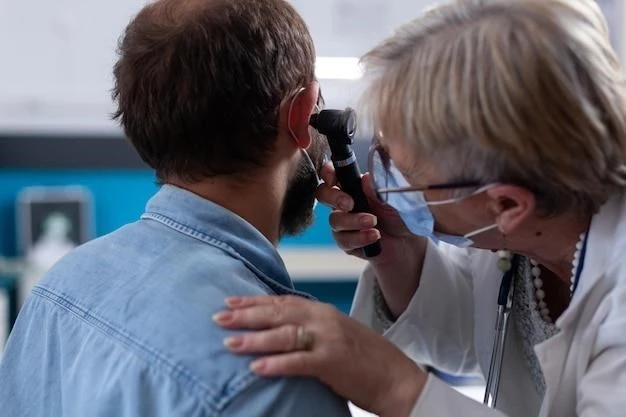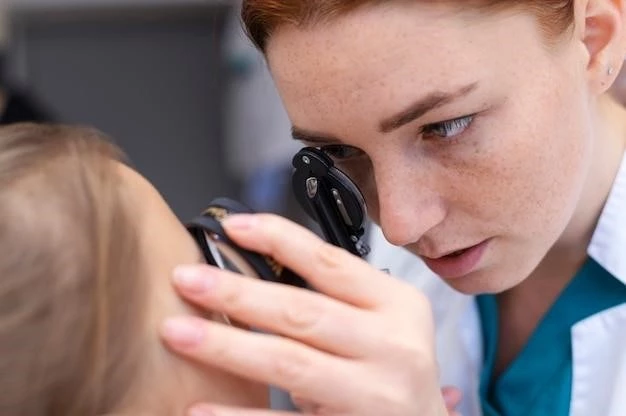Understanding Ichthyosis Microphthalmos Disease
Ichthyosis Microphthalmos Disease is a rare genetic disorder characterized by skin conditions and eye abnormalities. Individuals with this inherited condition often experience thick, scaly skin (ichthyosis) and underdeveloped or small eyes (microphthalmos).
This article aims to provide a comprehensive overview of the disease, including its symptoms, diagnosis, medical management, complications, healthcare providers involved, supportive care measures, and the impact on the quality of life of affected individuals.
I. Introduction to Ichthyosis Microphthalmos Disease
Ichthyosis Microphthalmos Disease is a rare genetic disorder that affects both the skin and the eyes. This condition is classified as a form of ectodermal dysplasia, a group of genetic syndromes that involve abnormalities of structures derived from the ectoderm.
Individuals with Ichthyosis Microphthalmos Disease typically present with two main features⁚ ichthyosis, a group of skin disorders characterized by dry, thick, and scaly skin, and microphthalmos, a condition where one or both eyes are abnormally small or underdeveloped.
The exact prevalence of Ichthyosis Microphthalmos Disease is unknown, but it is considered extremely rare. Due to the genetic nature of the disorder, it is typically inherited in an autosomal recessive pattern, meaning that both parents must carry a copy of the mutated gene for the child to be affected.
Research into Ichthyosis Microphthalmos Disease is ongoing, with a focus on understanding the underlying genetic mutations responsible for the condition and exploring potential treatment options to improve the quality of life for individuals affected by this rare disease.
II. Symptoms and Clinical Manifestations
The symptoms of Ichthyosis Microphthalmos Disease are primarily related to the skin and eyes. Individuals with this condition may experience excessive dryness, scaling, and thickening of the skin, which can lead to significant discomfort and potential complications.
In terms of eye abnormalities, microphthalmos is a key clinical manifestation, where the affected individuals have abnormally small or underdeveloped eyes. This can result in visual impairment or other eye-related issues that may require specialized care and interventions.
Other common symptoms of Ichthyosis Microphthalmos Disease may include abnormalities in hair growth, nails, and teeth. These features are all part of the broader spectrum of ectodermal dysplasias, of which this condition is a specific subtype.
Clinical manifestations can vary in severity among individuals affected by Ichthyosis Microphthalmos Disease. Some may have milder forms with limited skin and eye involvement, while others may experience more pronounced symptoms that impact their daily lives and overall well-being.
III. Diagnosis and Medical Management
Diagnosing Ichthyosis Microphthalmos Disease involves a comprehensive evaluation by healthcare providers, including dermatologists, ophthalmologists, and geneticists. The diagnosis is based on clinical features, family history, and genetic testing to confirm the presence of specific gene mutations associated with the condition.
Medical management of Ichthyosis Microphthalmos Disease focuses on addressing the symptoms and complications associated with the disorder. Treatment options may include topical emollients and moisturizers to alleviate skin dryness and scaling, as well as specialized ointments or creams to manage skin thickening.
For eye abnormalities such as microphthalmos, individuals may require vision correction measures, surgical interventions, or visual aids to optimize visual function and address any ocular complications. Regular monitoring by ophthalmologists is essential to ensure early detection and management of eye-related issues.
Genetic counseling plays a crucial role in the medical management of Ichthyosis Microphthalmos Disease, providing information about the inheritance pattern, family planning options, and available support services for affected individuals and their families.
IV. Complications and Healthcare Providers
Individuals with Ichthyosis Microphthalmos Disease may experience various complications related to both the skin and eyes. Skin complications can include increased susceptibility to infections, overheating due to impaired sweating, and psychological effects stemming from the visible skin abnormalities.
Eye-related complications may involve vision impairment, refractive errors, and increased risk of other eye conditions such as glaucoma or cataracts. These complications necessitate ongoing monitoring and intervention by a multidisciplinary team of healthcare providers.
Healthcare providers involved in the care of individuals with Ichthyosis Microphthalmos Disease include dermatologists, ophthalmologists, geneticists, pediatricians, and specialized nursing staff. Collaborative care is essential to address the diverse medical needs and challenges faced by affected individuals.
Regular follow-up visits with healthcare providers are crucial to monitor disease progression, assess treatment efficacy, and address any emerging complications promptly. A coordinated approach to care ensures comprehensive management of both the dermatological and ophthalmological aspects of the condition.

V. Supportive Care and Quality of Life
Supportive care plays a vital role in enhancing the quality of life of individuals with Ichthyosis Microphthalmos Disease. This includes providing psychological support, educational resources, and access to community networks to help individuals cope with the challenges posed by the condition.
Emotional support and counseling are essential to address the psychosocial impact of living with a visible and potentially debilitating genetic disorder. Support groups can also offer a sense of community and understanding among individuals facing similar experiences.
Education about the condition, including its symptoms, management strategies, and available resources, empowers both affected individuals and their families to make informed decisions about treatment options and long-term care planning.
Optimizing the quality of life for individuals with Ichthyosis Microphthalmos Disease involves a holistic approach that considers not only the medical aspects of the condition but also the emotional, social, and practical dimensions of daily living. By providing comprehensive supportive care, healthcare providers can help individuals navigate the challenges of living with this rare disease.
VI. Research Studies and Future Directions
Research studies focused on Ichthyosis Microphthalmos Disease aim to deepen our understanding of the underlying genetic mechanisms, pathophysiology, and potential treatment options for this rare condition. By investigating the genetic mutations responsible for the disorder, researchers seek to identify targeted therapies that may improve patient outcomes.
Ongoing research efforts also explore the developmental pathways involved in the formation of the skin and eyes, shedding light on the processes disrupted in individuals with Ichthyosis Microphthalmos Disease. This knowledge is essential for developing novel interventions that target specific aspects of the disease.
Future directions in the field of Ichthyosis Microphthalmos Disease research include the exploration of gene therapy approaches, personalized medicine strategies, and multidisciplinary collaborations to advance clinical care and management of affected individuals. By harnessing the latest scientific advances, researchers aim to enhance diagnostic accuracy, treatment efficacy, and ultimately, the quality of life for patients with this challenging condition.
